In development for iOS and macOS, there are two programming languages in use, Objective-C and Swift. So far, Objective-C has been used because of its object-oriented features and dynamic runtime, while Swift—introduced in 2014—offers a much more modern, intuitive, and effective way to code and quickly became the language of choice for new projects. The former differs from the latter only in characteristics and applications; however, knowing the differences holds the key to choosing the right tool for the purpose at hand. In this blog post, the basics of Objective C and Swift will be revisited, and then the features, advantages, and drawbacks of these programming languages will be contrasted.
What is Objective C Language?
Objective-C is a general, object-oriented, proprietary programming language designed in the early 1980s. It was an extension of the C programming language that further supported Smalltalk-style messaging. Objective C was the primary language used by Apple for macOS and iOS app development until the introduction of Swift.
Pros of Objective C Language
- Mature and Stable: With decades-long, Objective C is a rather mature language with a stable ecosystem.
- Rich Libraries and Frameworks: Apple’s frameworks provide immense support.
- Interoperability: It integrates quite well with C and C++.oled
Cons of Objective C Language
- Verbose Syntax: Syntax can get confusing and verbose as compared to modern languages.
- Memory Management Complexity: One needs to manage the memory manually, which can cause probable problems.
- Declining Popularity: Swift diminished the significance of Objective C.
Famous Apps Built Using Objective C
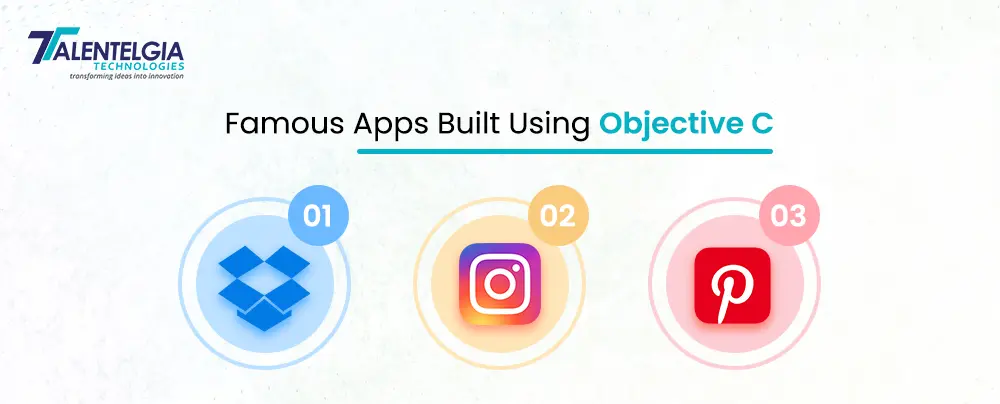
What is Swift Language?
At their annual WorldWide Developers Conference in 2014, Apple made an announcement: an entirely new flagship software programming language called Swift—to be their go-forward language in the creation of iOS, Mac OS, Apple Watch OS, and Apple TV OS applications. It was focused on being faster, safer, and more expressive than Objective C. Swift embeds many contemporary concepts in programming and thus aspires to replace Objective C as the language of choice for development in Apple’s ecosystem.
Pros of Swift Language
- Modern Syntax: Clean and more succinct syntax makes reading and writing code easier.
- Safety Features: It contains optional and type inference, which helps to prevent common coding errors.
- Performance: In general, it has faster execution with better optimization compared to Objective C.
Cons of Swift Language
- Learning Curve: The developers need to learn a new language and its features to work on it.
- Evolving Language: Swift is an evolving language. There may be a problem of compatibility with old versions of programs.
Famous Apps Built Using Swift
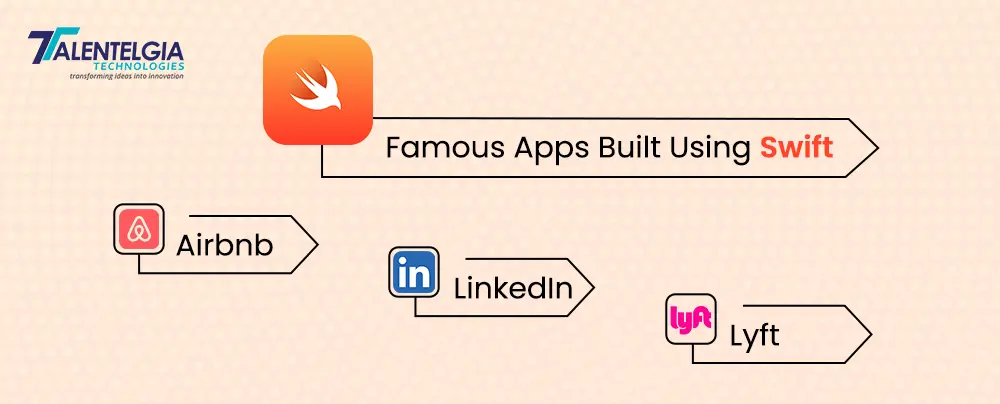
Major Differences Between Objective C and Swift
Origin and Evolution of Language
- Objective C: It is an older language having a sort of long history of Apple development.
- Swift: This is a new language that is aimed to modernize and improve Objective C.
Popularity and Adoption
- Objective C: On a rightful note, it is generally used in legacy codebases but less preferred for new projects.
- Swift: Swift is becoming popular because of the introduction of new modern features, and development is still being processed.
Memory Management
- Automatic Reference Counting (ARC) in Objective C: Needs manual effort to overcome memory management effectively.
- ARC in Swift: It’s fully Automatic and the chances of memory leaks are less.
- Manual Memory Management in Objective C: It’s more error-prone. It requires lots of care.
- Difference in Memory Leaks management: If ARC isn’t correctly managed, then memory leaks are possible in Objective while in Swift the chances of memory leaks are less as it’s automatically managed.
Comparing Syntax
- Variable Declaration:
- Objective C: int age = 25;
- Swift: var age = 25
- Function Definition:
- Objective C: – (void)print message;
- Swift: func print message()
- Control Structures:
- Objective C: for (int i = 0; i < 10; i++)
- Swift: for i in 0.<10
- Error Handling:
- Objective C: Utilizes NSError combined with try-catch blocks.
- Swift: Uses do-catch blocks with throws for error handling.
- Method Calling and Naming Conventions:
- Objective C: [object methodName];
- Swift: object.methodName()
Performance
- Execution Speed:
- Objective C: the dynamic dispatching in Objective C has a performance cost, making it slower.
- Swift: Swift uses static dispatch and new-time optimizations, hence it performs quicker and has added to the performance.
- Compilation Time:
- Objective C: This generally incurs longer compilation times due to the older architecture and verbose syntax. This slows down the development process, mostly for large codebases.
- Swift: It uses modern architecture, and the compilation process is optimal and blazingly fast. This enhances the productivity of the developers since iteration and testing cycles are faster.
- Runtime Efficiency:
- Objective C: Due to dynamic typing, the type of an Objective-C object is determined at runtime. This flexibility comes at the cost of inefficiency because the system is expected to do type-checking and method lookups during execution, adding to the overhead that may result in slow performance.
- Swift: On the other hand, Swift is statically typed, and thus it is known what type of object it is then at compile time. As such, the compiler can support more effective code optimization by reducing runtime type checking and method dispatch. Hence, Swift generally provides better runtime performance and faster execution than Objective-C.
Complexity of Code Structure
- Objective C Header and Implementation Files:
- Objective-C follows the philosophy of a two-separation file for the interface (Header) and implementation: .h for header and .m for implementation. Such separation increases the complexity of the code structure as the user will have to manage and synchronize two different files in one class.
- More importantly, it magnifies the risk of errors with a steep learning curve
- Swift Single File Approach:
- Seeing as Swift has one file for both interface and implementation, the life of a developer is made easy. Having one file for the interface and implementation makes the coding concise and clean. Having few files minimizes discrepancies and hence supports easy maintainability of the code.
- Protocols and Delegates:
- Objective-C does take extensive support for protocols and delegates to define interfaces with and handle object communication. These can wear down the power of code and can often make it verbose or complex, in many ways, especially in the presence of many protocols and delegate methods.
- Swift: Protocols bring a simpler and clearer syntax. In Swift, it’s easy to do the definition and declaration for defining and adopting protocols. This makes defining protocols much easier and more efficient and using them much easier. The protocol-based programming paradigm of Swift encourages users to conform to protocols for developing interfaces, which increases the reusability and flexibility of code.
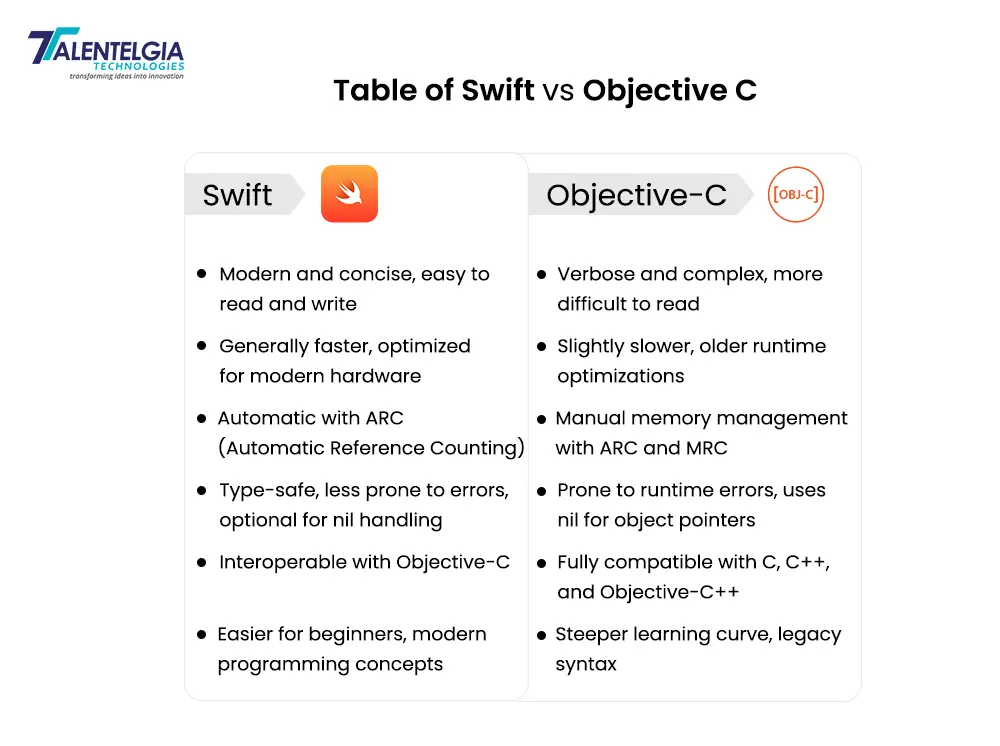
- Inheritance and Polymorphism:
- Objective C: Supports class-based declaration in inheritance. It is effective enough, but the syntax might be verbose and results in a lot of manual management, including header and implementation files, for proper implementation of inheritance and polymorphism.
- Swift: It also includes class-based inheritance, yet it gives a highly simplified mechanism. The cleaner syntax of Swift and its modern language features allowed the process of inheritance and polymorphism to be easier to adopt and manage. Alongside, Swift’s easy conformance to the way of class-based inheritance is its support for protocol-oriented programming. This allows flexibility for developers and provides so many opportunities to reuse the code.
Length of Code, Complexity, Time-Efficiency:
- Number of Lines of Code for Similar Pieces of Work:
- Objective C: More lines are needed to accomplish the same thing.
- Swift: Fewer lines of code are needed because the syntax is more succinct.
- Ease of Reading and Maintenance:
- Objective C: More difficult to read and thus more complex because of its verbose syntax.
- Swift: Much easier to read and maintain.
- Development Speed:
- Objective C: This leads to a slower development cycle.
- Swift: Faster, again because of modern features and easier syntax.
Development Environment and Tools:
- Xcode Support:
- Objective C: Fully supported in Xcode.
- Swift: Fully integrated with Xcode, it comes with all the modern features.
- Debugging Tools:
- Objective C: Stable debugging tools.
- Swift: Advanced debugging tools available.
- Third-Party Libraries and Frameworks:
- Objective C: Huge libraries are available, but a few are outdated.
- Swift: Fast-growing ecosystem of modern libraries and frameworks.
Interoperability
- Using Objective C and Swift Together:
- Objective C Works with Swift in mixed-language projects.
- Bridging Header:
- Needed to bridge between Objective C and Swift codebases.
- Mixed-Language Projects:
- Objective C calls Swift code and vice versa with proper setup.
Key Takeaways
- Language Evolution:
- Objective C is a legacy language, and it is rather older in the Apple ecosystem. This makes it provide stability and compatibility with older projects.
- Swift is a modern language designed to address limitations in Objective C with better performance and more intuitive syntax.
- Code Readability and Maintainability:
- Objective C can become rather verbose, which hence may turn out complex and difficult to read or, for that matter, maintain the code.
- Swift syntax is more expressive and readable, thus easier to maintain a code, and reducing development time.
- Memory Management:
- Objective C needs Manual Memory Management using ARC. That can bring many errors.
- Swift has Automatic Memory Management with ARC. This prevents memory leakage and eases the development process.
- Performance:
- Objective C, being an older language, may sometimes show slower execution. This also happens during compilation.
- Swift generally offers improved performance owing to optimized execution and might be appropriate for applications requiring high performance.
- Development Tools:
- Xcode supports Objective C in its entirety, but using this language for new projects is rather discouraged. Swift is maintained very actively in Xcode, with many modern debugging features for the betterment of the developer experience.
- Future Prospects:
- By an enormous margin, Objective C will still be relevant and useful for legacy applications, but its usage is fast falling out of favor in comparison to new technologies.
- Swift is under ultra-active development and is projected to continue to be the language of choice for future iOS and macOS development.
- Community and Ecosystem:
- Objective C has an established community that is less active in new open-source projects. High community support and a growing ecosystem
- With increasing open-source contributions—make Swift shine.
Conclusion
These major differences will help a developer understand which to pick for his project needs, existing codebases, and development plans for the future. Although Objective-C and Swift both have a place in iOS and macOS development, some of the strengths and weaknesses of these languages are quite interesting. Objective-C stands for maturity and stability; it is thus relevant for legacy codebases and integration with C/C++. On the other hand, the modern syntax, safety features, and superior performance of Swift argue for its adoption as the language of choice for new projects. This knowledge of the basic differences between the two programming languages can help a developer choose the right tool for his needs. Since Swift is actively being developed and accompanied by the growing support of the community, it will stay on top of Apple's development ecosystem as the industry moves ahead.


 Healthcare App Development Services
Healthcare App Development Services
 Real Estate Web Development Services
Real Estate Web Development Services
 E-Commerce App Development Services
E-Commerce App Development Services E-Commerce Web Development Services
E-Commerce Web Development Services Blockchain E-commerce Development Company
Blockchain E-commerce Development Company
 Fintech App Development Services
Fintech App Development Services Fintech Web Development
Fintech Web Development Blockchain Fintech Development Company
Blockchain Fintech Development Company
 E-Learning App Development Services
E-Learning App Development Services
 Restaurant App Development Company
Restaurant App Development Company
 Mobile Game Development Company
Mobile Game Development Company
 Travel App Development Company
Travel App Development Company
 Automotive Web Design
Automotive Web Design
 AI Traffic Management System
AI Traffic Management System
 AI Inventory Management Software
AI Inventory Management Software
 AI Software Development
AI Software Development  AI Development Company
AI Development Company  AI App Development Services
AI App Development Services  ChatGPT integration services
ChatGPT integration services  AI Integration Services
AI Integration Services  Generative AI Development Services
Generative AI Development Services  Natural Language Processing Company
Natural Language Processing Company Machine Learning Development
Machine Learning Development  Machine learning consulting services
Machine learning consulting services  Blockchain Development
Blockchain Development  Blockchain Software Development
Blockchain Software Development  Smart Contract Development Company
Smart Contract Development Company  NFT Marketplace Development Services
NFT Marketplace Development Services  Asset Tokenization Company
Asset Tokenization Company DeFi Wallet Development Company
DeFi Wallet Development Company Mobile App Development
Mobile App Development  IOS App Development
IOS App Development  Android App Development
Android App Development  Cross-Platform App Development
Cross-Platform App Development  Augmented Reality (AR) App Development
Augmented Reality (AR) App Development  Virtual Reality (VR) App Development
Virtual Reality (VR) App Development  Web App Development
Web App Development  SaaS App Development
SaaS App Development Flutter
Flutter  React Native
React Native  Swift (IOS)
Swift (IOS)  Kotlin (Android)
Kotlin (Android)  Mean Stack Development
Mean Stack Development  AngularJS Development
AngularJS Development  MongoDB Development
MongoDB Development  Nodejs Development
Nodejs Development  Database Development
Database Development Ruby on Rails Development
Ruby on Rails Development Expressjs Development
Expressjs Development  Full Stack Development
Full Stack Development  Web Development Services
Web Development Services  Laravel Development
Laravel Development  LAMP Development
LAMP Development  Custom PHP Development
Custom PHP Development  .Net Development
.Net Development  User Experience Design Services
User Experience Design Services  User Interface Design Services
User Interface Design Services  Automated Testing
Automated Testing  Manual Testing
Manual Testing  Digital Marketing Services
Digital Marketing Services 
 Ride-Sharing And Taxi Services
Ride-Sharing And Taxi Services Food Delivery Services
Food Delivery Services Grocery Delivery Services
Grocery Delivery Services Transportation And Logistics
Transportation And Logistics Car Wash App
Car Wash App Home Services App
Home Services App ERP Development Services
ERP Development Services CMS Development Services
CMS Development Services LMS Development
LMS Development CRM Development
CRM Development DevOps Development Services
DevOps Development Services AI Business Solutions
AI Business Solutions AI Cloud Solutions
AI Cloud Solutions AI Chatbot Development
AI Chatbot Development API Development
API Development Blockchain Product Development
Blockchain Product Development Cryptocurrency Wallet Development
Cryptocurrency Wallet Development About Talentelgia
About Talentelgia  Our Team
Our Team  Our Culture
Our Culture 
 Healthcare App Development Services
Healthcare App Development Services Real Estate Web Development Services
Real Estate Web Development Services E-Commerce App Development Services
E-Commerce App Development Services E-Commerce Web Development Services
E-Commerce Web Development Services Blockchain E-commerce
Development Company
Blockchain E-commerce
Development Company Fintech App Development Services
Fintech App Development Services Finance Web Development
Finance Web Development Blockchain Fintech
Development Company
Blockchain Fintech
Development Company E-Learning App Development Services
E-Learning App Development Services Restaurant App Development Company
Restaurant App Development Company Mobile Game Development Company
Mobile Game Development Company Travel App Development Company
Travel App Development Company Automotive Web Design
Automotive Web Design AI Traffic Management System
AI Traffic Management System AI Inventory Management Software
AI Inventory Management Software AI Software Development
AI Software Development AI Development Company
AI Development Company ChatGPT integration services
ChatGPT integration services AI Integration Services
AI Integration Services Machine Learning Development
Machine Learning Development Machine learning consulting services
Machine learning consulting services Blockchain Development
Blockchain Development Blockchain Software Development
Blockchain Software Development Smart contract development company
Smart contract development company NFT marketplace development services
NFT marketplace development services IOS App Development
IOS App Development Android App Development
Android App Development Cross-Platform App Development
Cross-Platform App Development Augmented Reality (AR) App
Development
Augmented Reality (AR) App
Development Virtual Reality (VR) App Development
Virtual Reality (VR) App Development Web App Development
Web App Development Flutter
Flutter React
Native
React
Native Swift
(IOS)
Swift
(IOS) Kotlin (Android)
Kotlin (Android) MEAN Stack Development
MEAN Stack Development AngularJS Development
AngularJS Development MongoDB Development
MongoDB Development Nodejs Development
Nodejs Development Database development services
Database development services Ruby on Rails Development services
Ruby on Rails Development services Expressjs Development
Expressjs Development Full Stack Development
Full Stack Development Web Development Services
Web Development Services Laravel Development
Laravel Development LAMP
Development
LAMP
Development Custom PHP Development
Custom PHP Development User Experience Design Services
User Experience Design Services User Interface Design Services
User Interface Design Services Automated Testing
Automated Testing Manual
Testing
Manual
Testing About Talentelgia
About Talentelgia Our Team
Our Team Our Culture
Our Culture
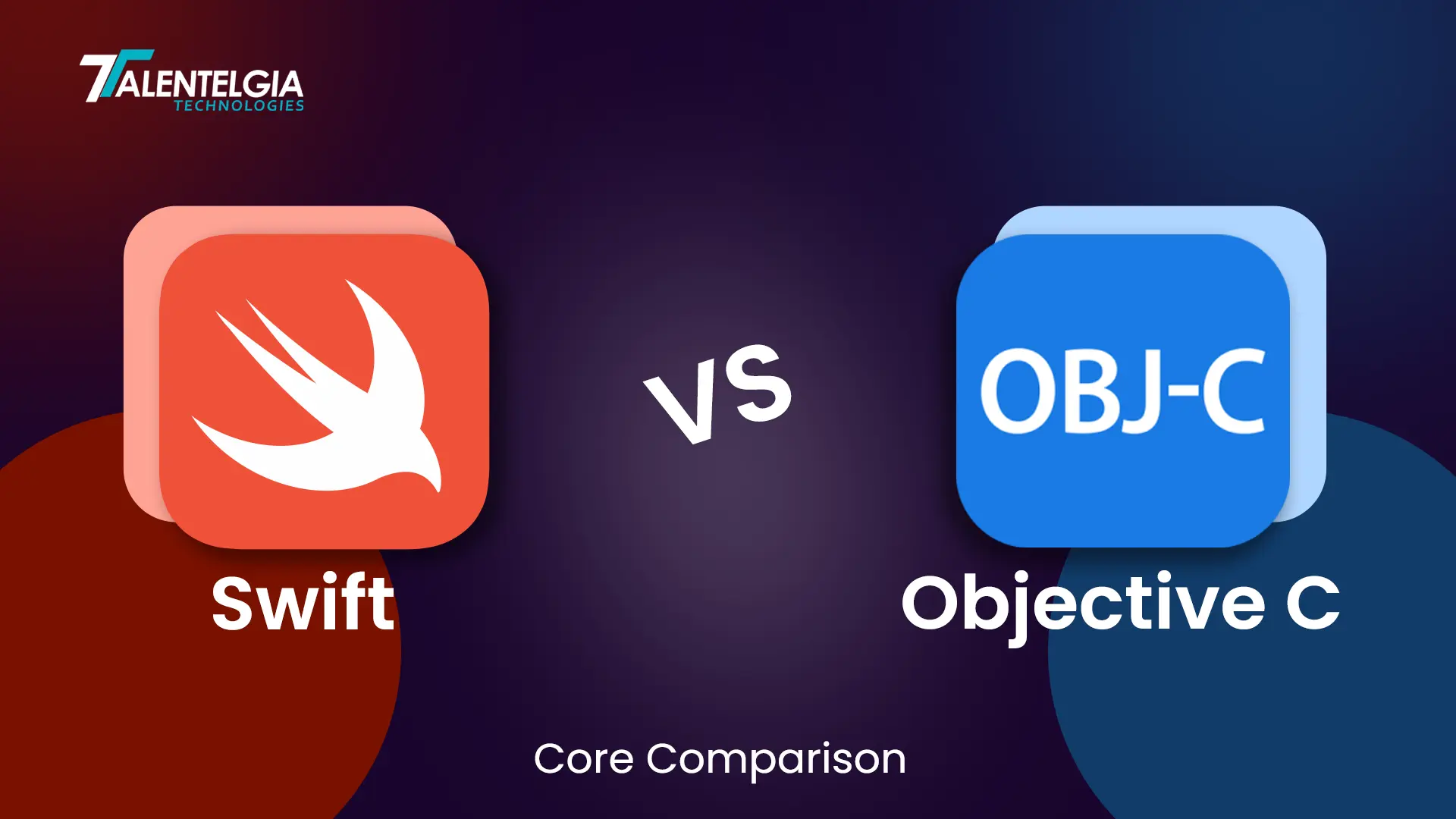

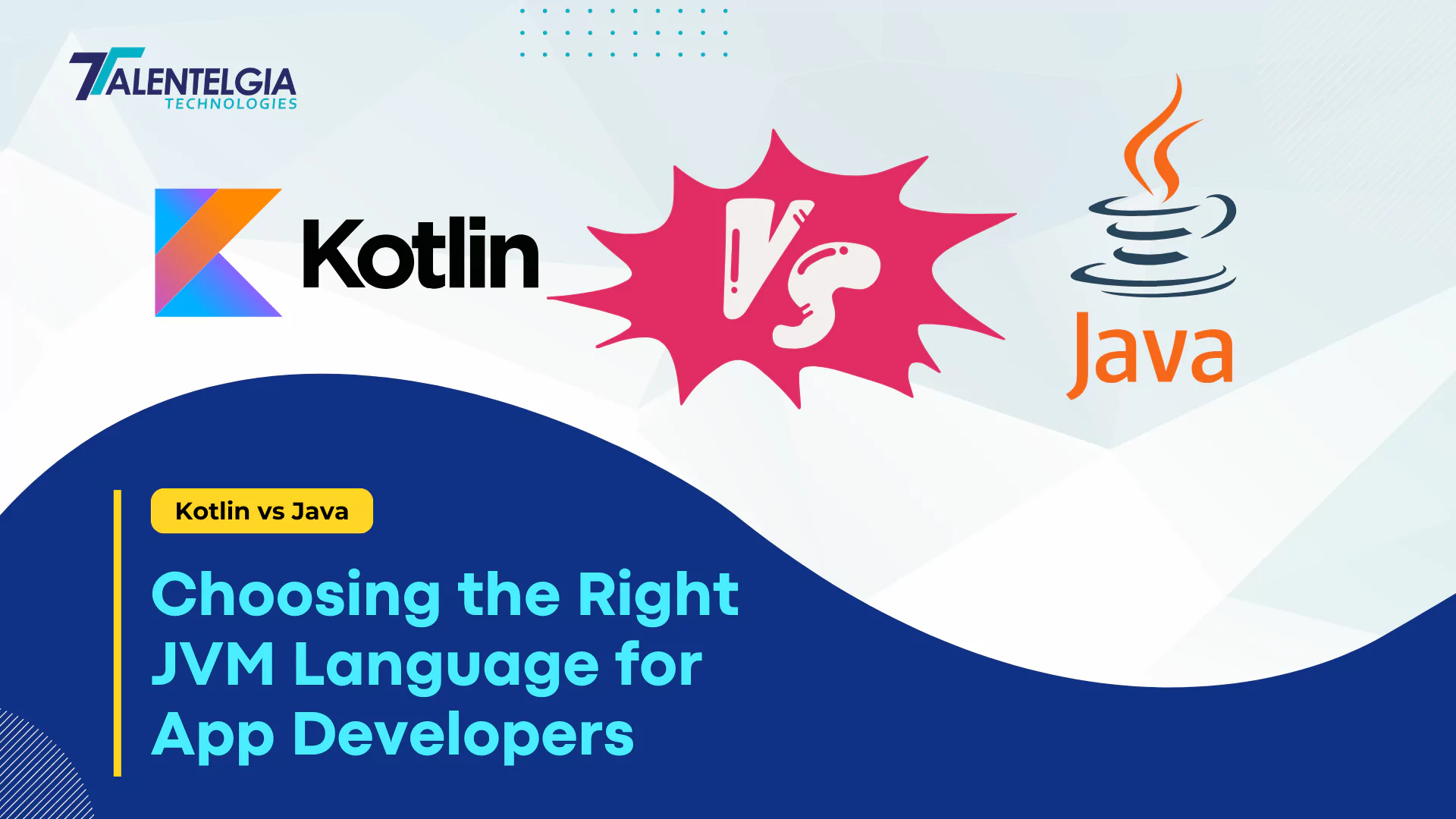

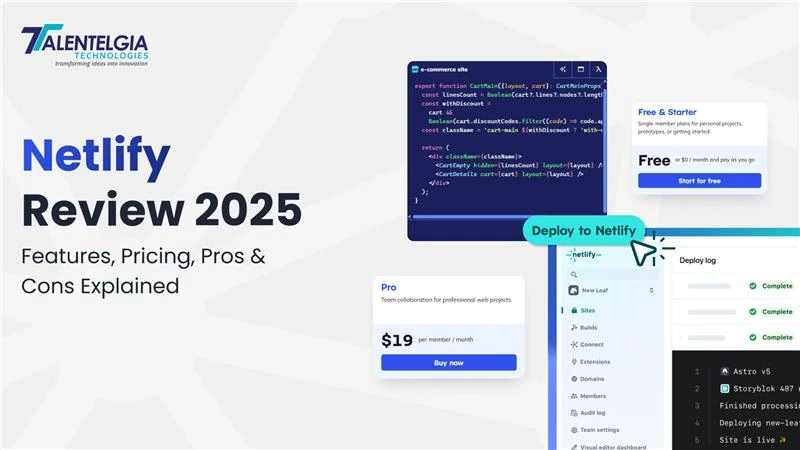

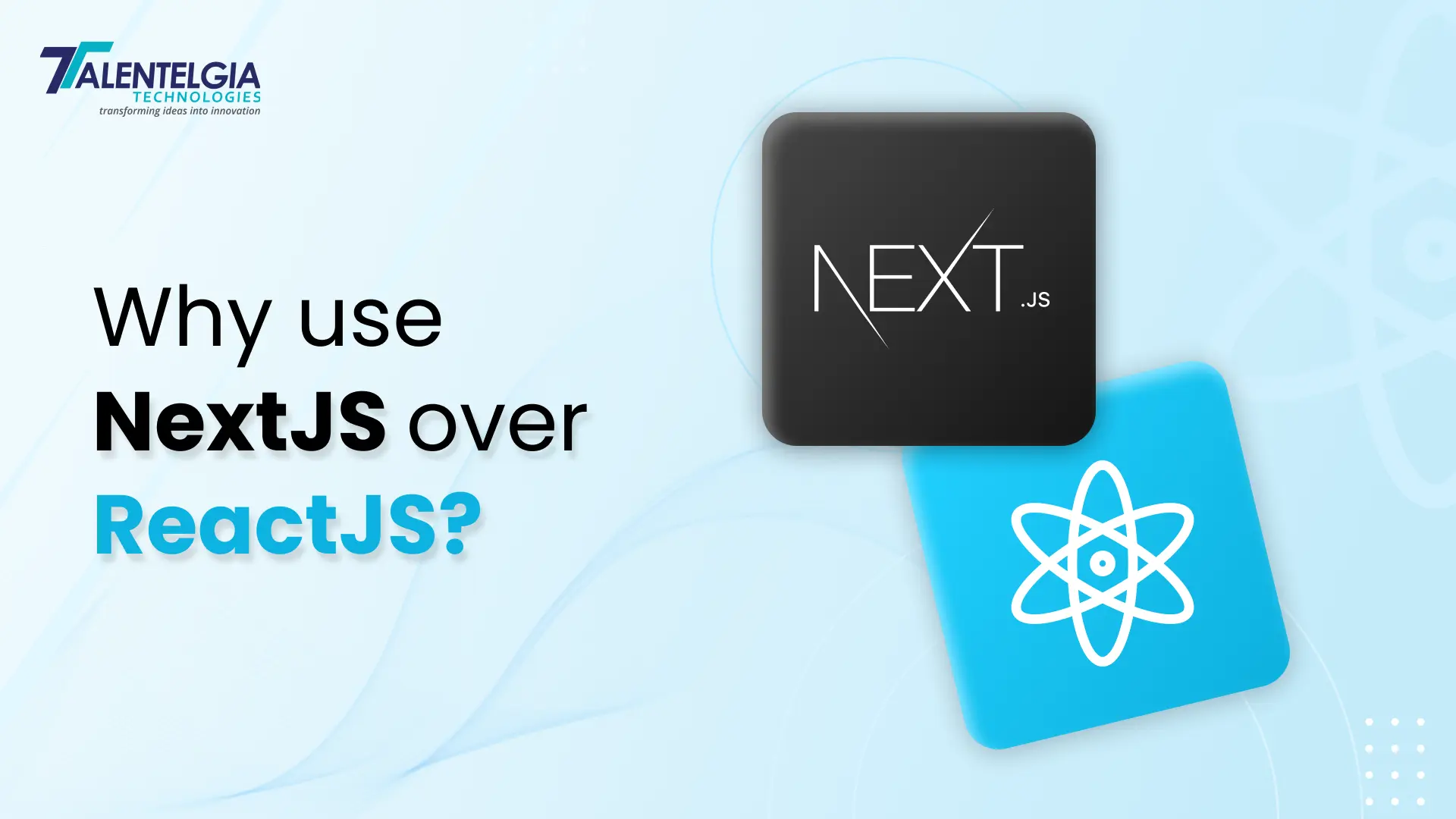











 Write us on:
Write us on:  Business queries:
Business queries:  HR:
HR: 




